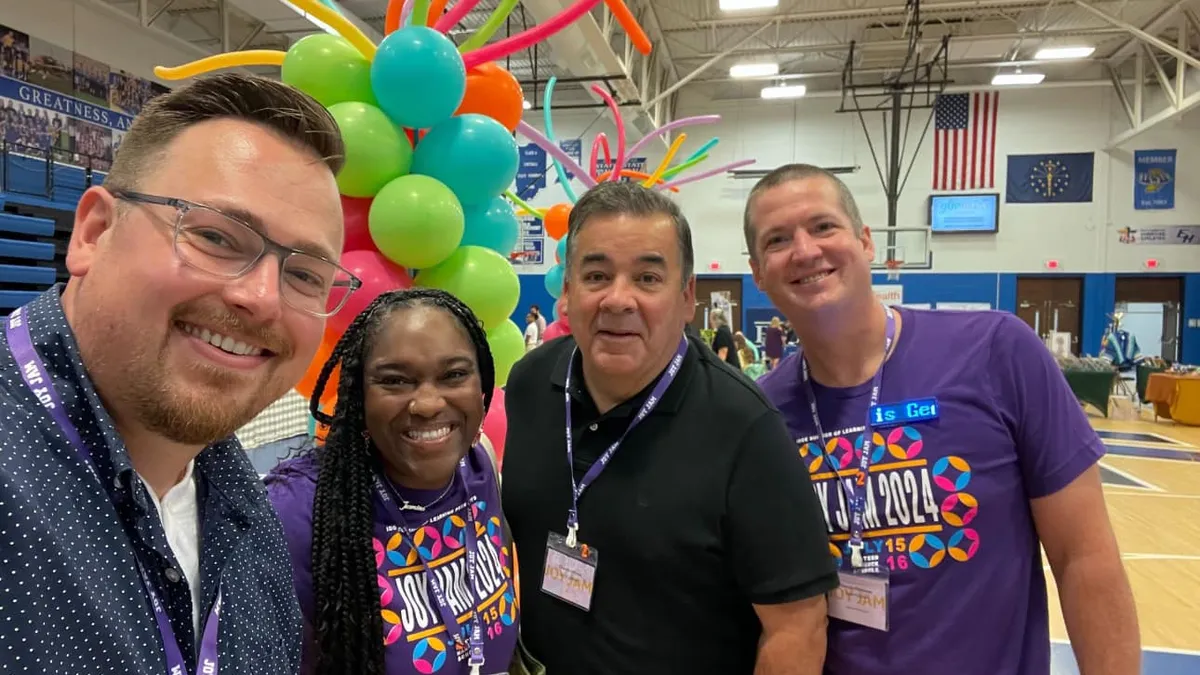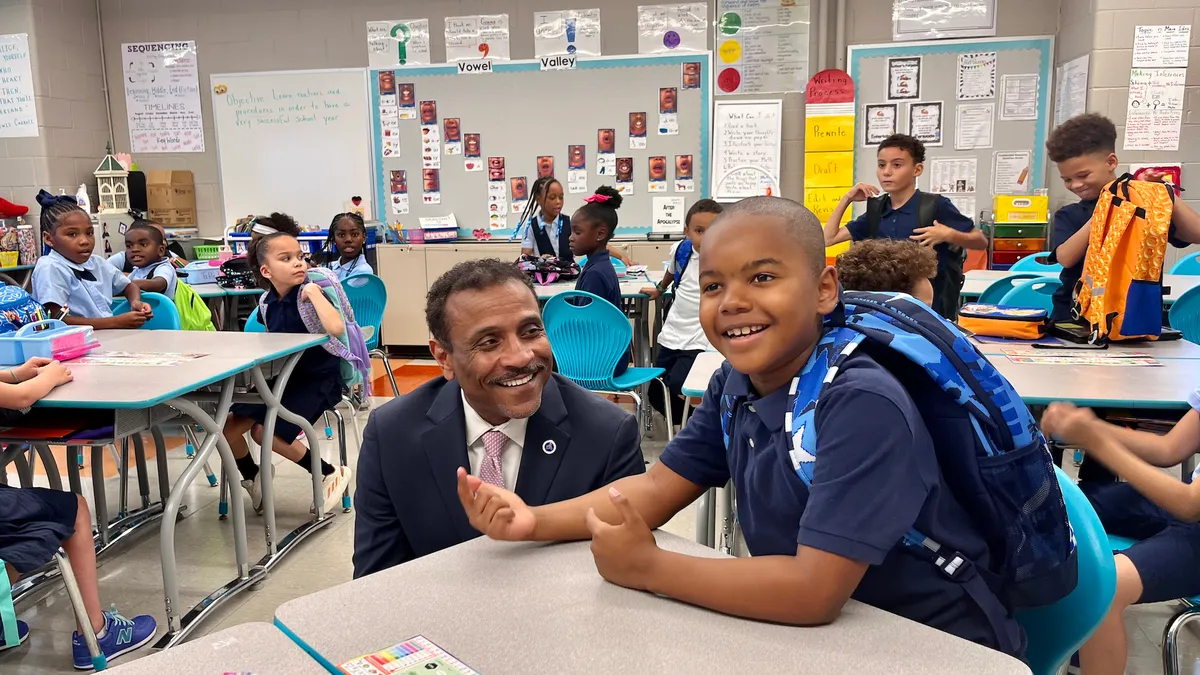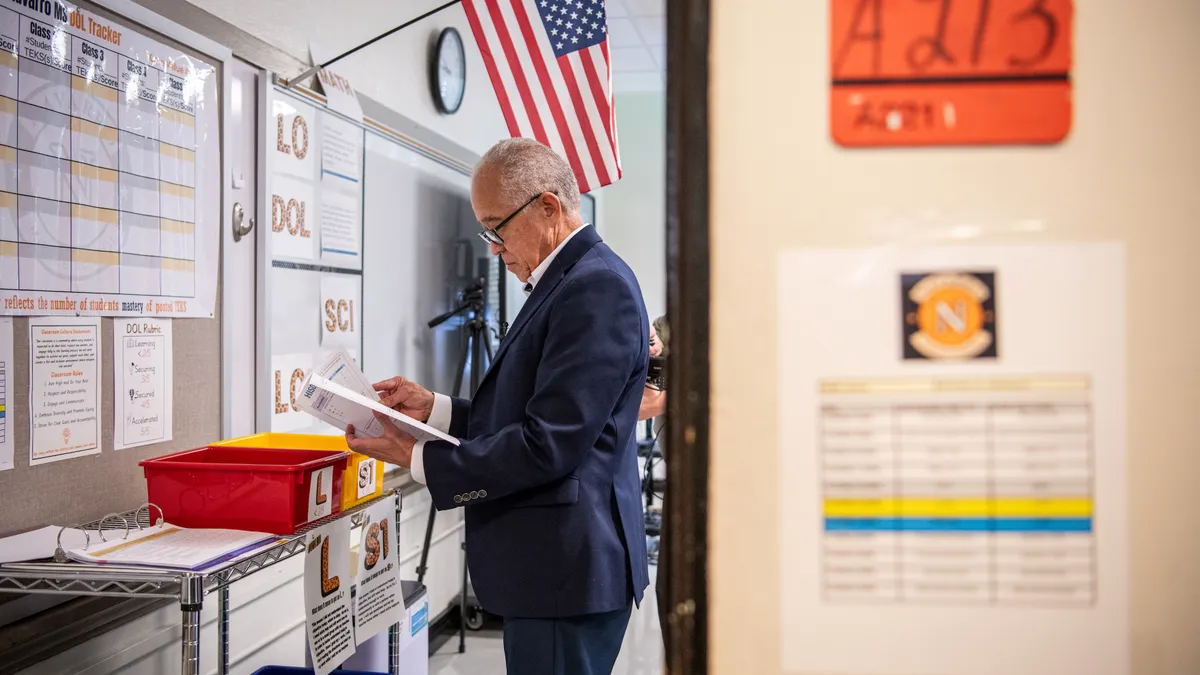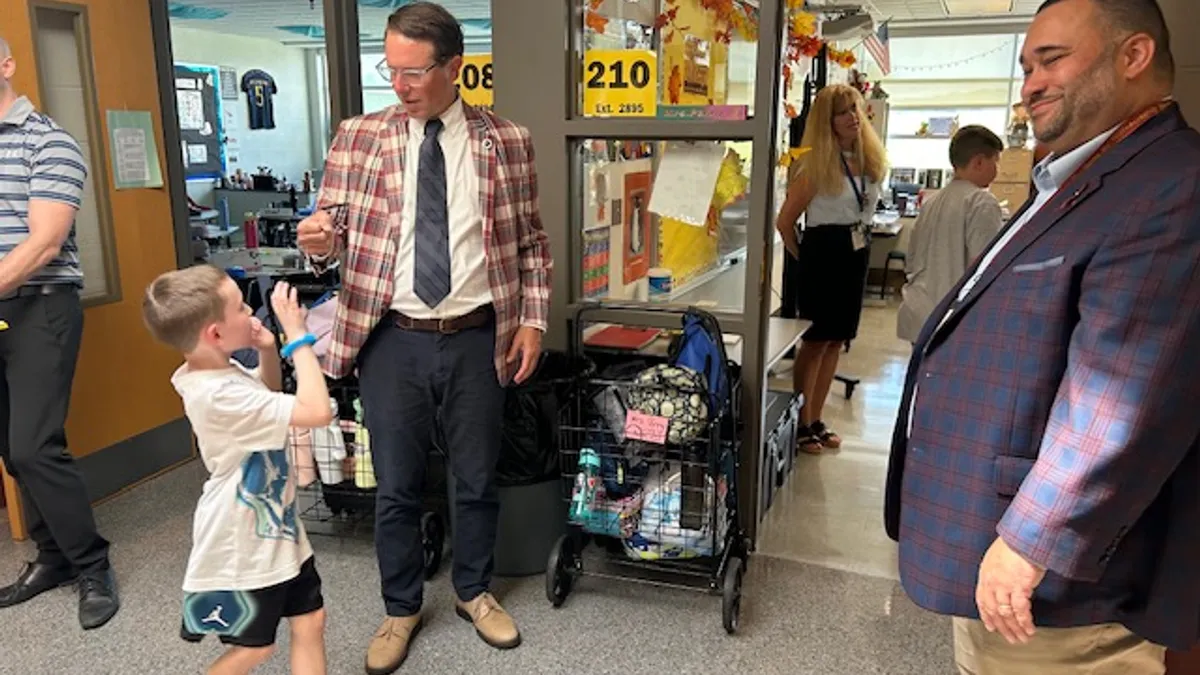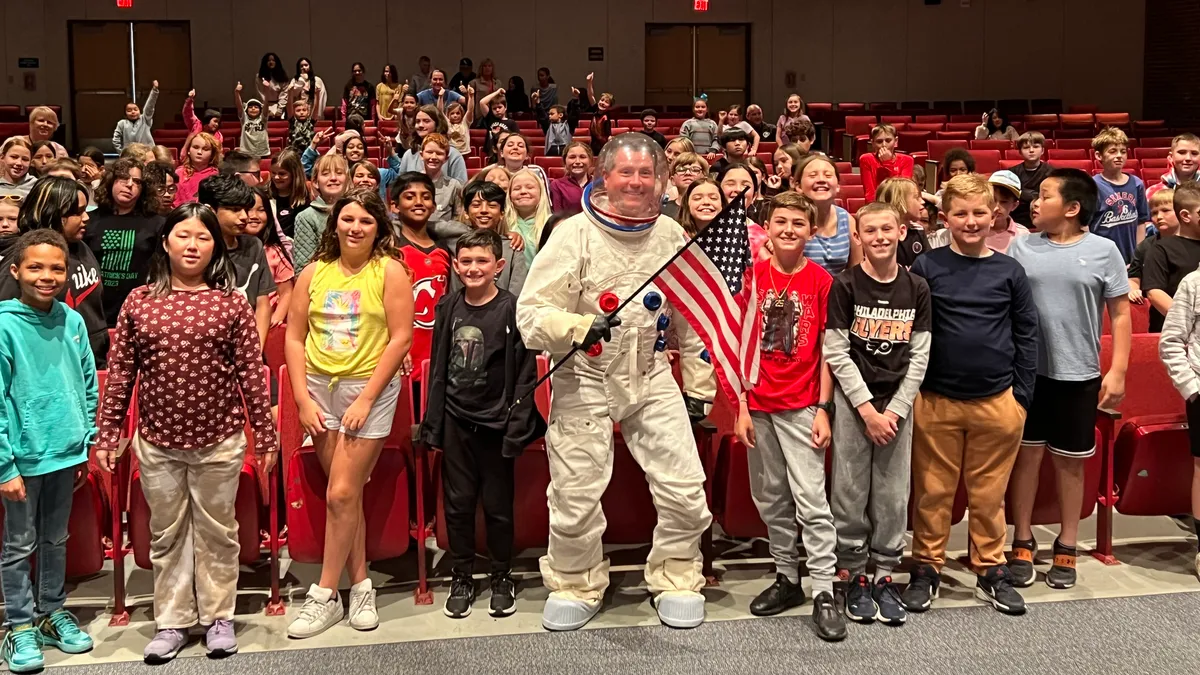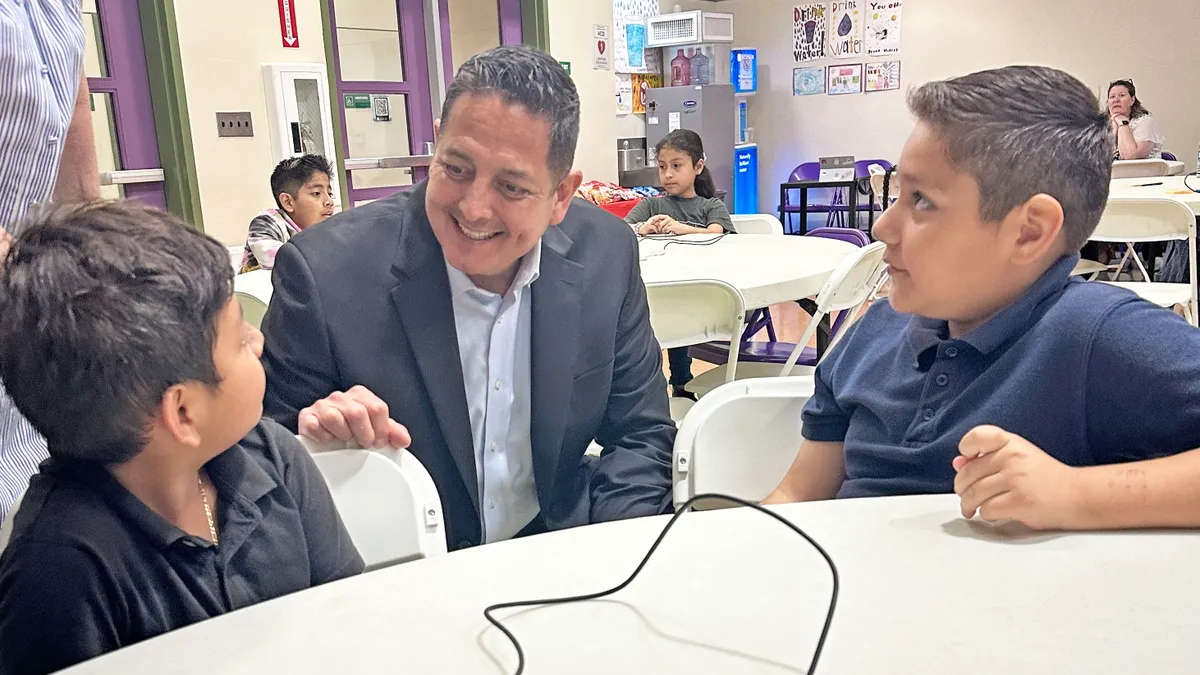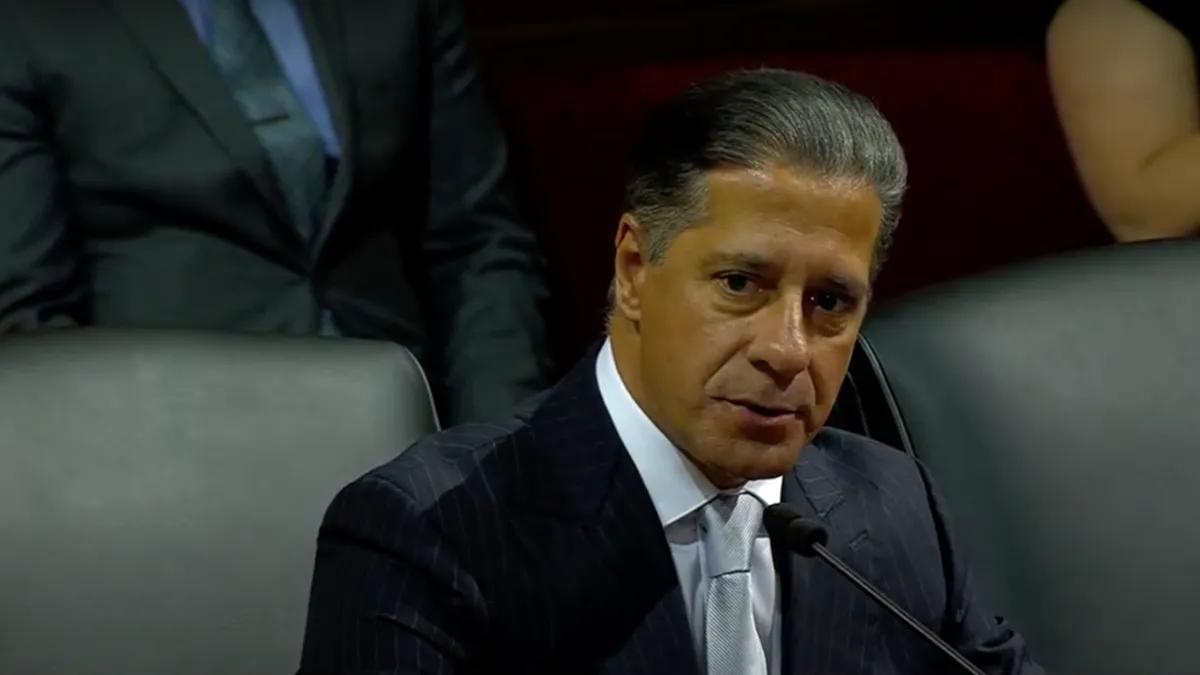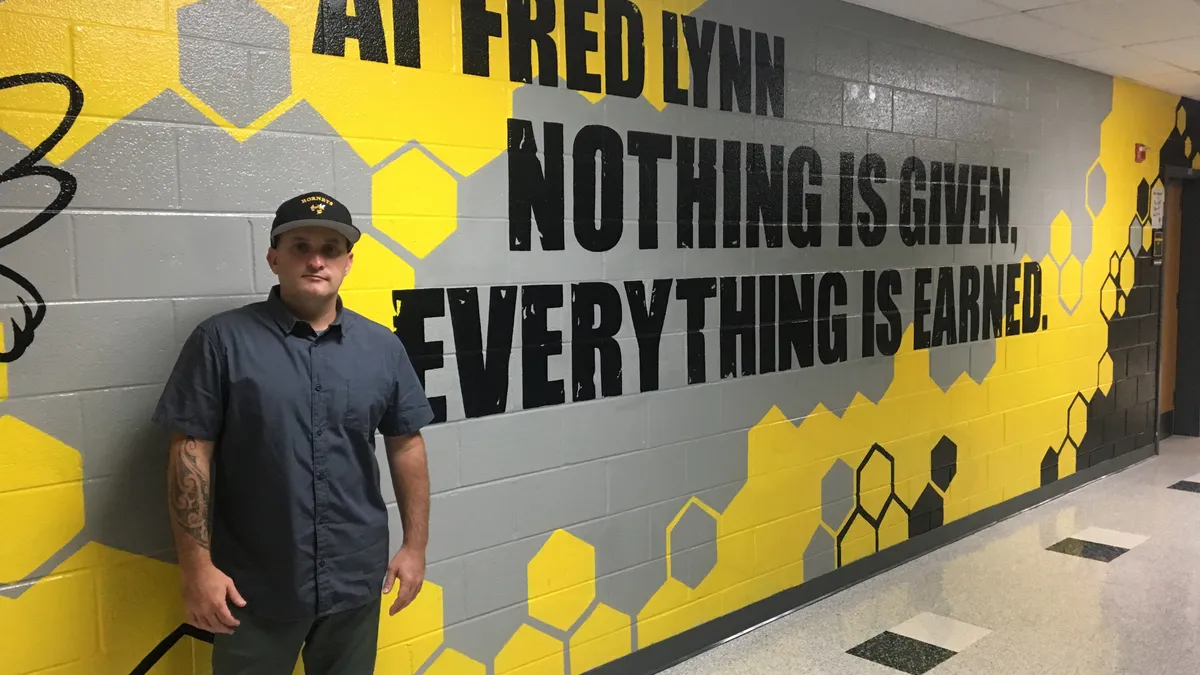Lessons In Leadership is an ongoing series in which K-12 principals and superintendents share their best practices as well as challenges overcome. For more installments, click here.
Located about 30 miles north of Nashville, Sumner County Schools is Tennessee’s 8th largest district, serving 30,200 students across 52 schools. According to state data, about half of students perform at or above standards in English language arts.
Among efforts to improve ELA performance, Director of Schools Scott Langford — a third-generation educator whose parents and great aunts also taught in the district — is looking to artificial intelligence to help teachers focus more attention on both students who need additional guidance and those needing more of a challenge.
Naturally, one of the first questions with AI rollouts is whether a district has had to address any data privacy concerns within the school community, but Langford says having an extensive protocol in place before data is shared has helped Sumner County avoid issues on that front.
We recently caught up with Langford to learn more about his district’s strategy for using AI in the classroom, the results he’s seeing so far, and what questions to ask vendors before adopting an AI tool.
Editor’s Note: The following interview has been edited for brevity and clarity.
K-12 DIVE: What’s your district’s strategy for using AI in the classroom? What factors did you take into consideration?
SCOTT LANGFORD: At least during my career, ed tech has been mostly gimmicky, or it was kind of an add-on to get you to buy other stuff, like a curriculum. But when you got the actual product, you had to conform what you were doing to it.

As we started looking at AI tools, our thoughts were, “We need to have a strong teaching and learning strategy, and then try to identify where we think AI can supplement or improve what we're doing.”
When I look at a lot of the AI products that are out there now, they try to do everything — instead of smaller things. For instance, one of the things we asked ourselves is, “How do we improve the delivery of ELA lessons?”
We invested heavily in HQIM [high quality instructional materials]. We emphasize foundational literacy very strongly. But after a couple of years, you start to see that there are some gaps in the way instruction is being delivered, and also teachers are overwhelmed with all the data they receive. I think every one of our teachers wants to give students instantaneous feedback and support, but you can't do that when you’ve got a classroom full of kids.
So our question was, “How can we improve the data that teachers are receiving so they can make more informed teaching decisions?” That’s where we found Coursemojo. It’s about a 15- or 20-minute lesson that's embedded into an ELA lesson, and it pushes students on their understanding and moves them toward a deeper understanding of the text and the assignment.
What we're seeing is, for the students, they are pushed hard to grow in their knowledge and understanding of the main point of the lesson. The teacher at the same time receives feedback on how each individual student is doing, and then as they transition out of that module, it pulls all the data together and suggests questions the teacher can ask the whole class, so it provides instantaneous support to the teacher as well.
That is a classic example of how we're trying to use AI, because it's taking advantage of what AI brings to the table to filter through large amounts of data for an individual student, but then also for a whole classroom full of students. It actually kind of functions as a teaching assistant for each student. It doesn't replace the teacher — it just increases the efficiency and power of that teacher.
Recent NAEP [National Assessment of Educational Progress] scores spotlighted the need to boost student achievement in reading. Did that factor into decisions around using AI to help personalize assignments or address individual students’ gaps?
LANGFORD: I don't think it's a big mystery that students have gaps in their ability to read and comprehend text. I think that the problem and where you're always tied up is you don't have the resources to really dig in and provide each student the individualized support that would move the needle.
Looking at NAEP and, again, seeing, “Hey, here are some areas where our kids are really struggling,” the question then becomes, “Can we develop AI tools that meet that need to provide support for individual students?” What we don't want to do is go in where kids are just on a device for the entire 90 minutes of their ELA class, but [rather] the tools are integrated so that kids get the personalized support while also being part of a larger class.
What were some of the apprehensions that you might have had to address with teachers when you started incorporating AI in schools?
LANGFORD: Obviously, the fear of cheating is pretty widespread. We’ve messaged that cheating has existed as long as there have been pencils and neighbors, and there's so many easy ways to address academic dishonesty that we've dealt with for generations.
The biggest fear was that it was going to replace teachers. I think by just showcasing it to teachers and giving them room to experience the product, [they can] understand there's no scenario where there's any AI tool that's going to replace a classroom teacher. But what we can do is [show them how it can] cut out hours and hours of teacher work so they can focus that time on engaging with students — which is where every one of our teachers prefers to spend their time.
What are some of the biggest successes that you've seen with the AI tools that you've used?
LANGFORD: From our benchmarks, we've shown that every one of our schools using Coursemojo is either at or ahead of where they were last year. We're anticipating to see some sizable gains in their ELA performance, and we won't know until late June or early July, but the feedback from our benchmark testing that's pretty closely aligned to our accountability test shows pretty steady progress across the year.
And that's just piloting. Next year will be significantly better, because we learned a lot this year. We’ll have this model in more grades, and our support will be a lot better.
Our district loses the most growth among our highest-quintile kids, because a lot of times the teacher is focused on supporting students who are struggling, and the students who are very successful don't get as much individualized attention. So, anecdotally, at first they didn't like it, because it kept asking them questions. It made them cite, for instance, the text they were referencing and then develop a stronger topic sentence to support it more clearly.
Over time, they've grown to appreciate it. But then I think on the flip side, students who were struggling with vocabulary or understanding a passage had the opportunity to go deep with the platform instead of being in front of their classmates, so they felt like they had a much better understanding to participate in group discussions.
On the teacher side, some of our new teachers have expressed how much easier it's made it for them to ask better questions.
So I think that there have been some benefits for students and teachers. In the future, as we run this to a larger scale, administrators will also be able to look at the dashboard and see exactly where kids are individually and across classrooms.
What advice would you give to other district leaders who are still trying to figure out how AI would fit into their schools?
LANGFORD: The biggest thing is just not to be scared, but to ask specifically, “What is it that we need? What need are we trying to address?”
I think AI is best suited right now to meet needs that are defined, like individualized or niche needs that a school might have. It could be IEP [individualized education program] writing, it could be ELA support for lessons, high school schedules — if you identify the need, there are plenty of great AI companies out there.
You also need to talk to not just a sales rep but the CEO or someone fairly high up in the company. In the past, it was just, “You can have whatever you want as long as it looks like this, and then you bend what you're doing to what we produced.” Now, the best AI companies will almost custom-build a product to meet the needs of your school or district.
What are the most important questions for district leaders to ask AI vendors up front?
LANGFORD: Will you be on the ground talking to our leaders and teachers? What is your process for receiving feedback to make changes to the product? What kind of training and support do we receive — and not just once — but how does that training and support look over the course of the school year and subsequent school years?






 Dive Awards
Dive Awards



